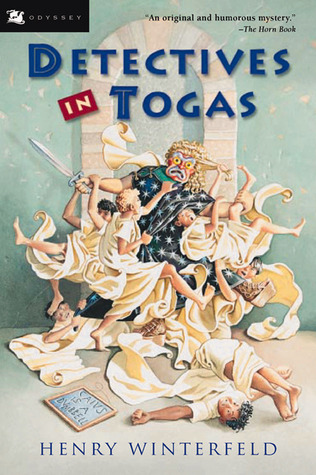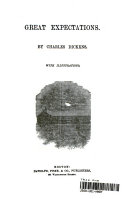"Detectives in Togas" Characters Analysis
historical fiction | 249 pages | Published in NaN
In these two delightful history-mysteries, seven boys in Ancient Rome solve strange crimes . . . thanks to some help from their cranky teacher, a little bit of logic, and a lot of amusing misadventure.Yes, Rufus wrote CAIUS IS A DUMBBELL on his tablet at school, but no, he did not break into the schoolroom, did not tie up his teacher, and certainly did not paint his slur about Caius on the Temple of Minerva (even if it is in Rufus's own handwriting). Rufus is doomed unless his six classmates can find out who is really responsible. Every hour seems to bring a new, confusing clue . . . until the boys finally stumble upon someone who is not what he appears to be.
| ISBN_13: | 9780152162801 |
Estimated read time: 7 min read
Table of Contents
List of Characters
| Character Name | Role |
|---|---|
| Rufus | Protagonist |
| Caius | Protagonist |
| Antonius | Protagonist |
| Mucius | Protagonist |
| Flavius | Protagonist |
| Julius | Antagonist |
| Xantippus | Antagonist |
| Aurelius | Supporting Character |
| Decimus | Supporting Character |
| Fabius | Supporting Character |
Role Identification
In the book "Detectives in Togas" by Henry Winterfeld, the main characters are a group of young boys who become amateur detectives. Rufus, Caius, Antonius, Mucius, and Flavius are the main protagonists who work together to solve a mystery in Ancient Rome. On the other hand, Julius and Xantippus are the antagonists who create obstacles for the young detectives. Additionally, Aurelius, Decimus, and Fabius are supporting characters who provide guidance and assistance to the protagonists.
Character Descriptions
- Rufus: Rufus is a curious and clever young boy who takes the lead in the group of detectives. He is known for his determination and quick thinking. Rufus has a keen eye for detail and often notices things that others overlook. He is resourceful and uses his knowledge of Roman history and culture to help solve the mystery.
- Caius: Caius is Rufus's best friend and an integral part of the detective group. He is portrayed as a loyal and dependable character. Caius is known for his bravery and willingness to take risks. He often provides the group with practical solutions to problems and is skilled at gathering information.
- Antonius: Antonius is a studious and observant young boy who brings a logical and analytical approach to the detective group. He is known for his intelligence and problem-solving skills. Antonius often uses deductive reasoning to unravel clues and make connections. He is calm under pressure and plays a crucial role in deciphering cryptic messages.
- Mucius: Mucius is a thoughtful and perceptive member of the detective group. He is portrayed as a compassionate and empathetic character. Mucius often notices the emotional aspect of a situation and is able to understand the motivations of others. He uses his intuition to guide the group in their investigations.
- Flavius: Flavius is the youngest member of the detective group but proves to be a valuable asset. He is portrayed as an energetic and enthusiastic character. Flavius often brings a fresh perspective to the investigations and is not afraid to ask questions. He is quick on his feet and provides a sense of optimism to the group.
- Julius: Julius is the main antagonist in the story. He is portrayed as a cunning and manipulative character. Julius constantly tries to undermine the detective group and prevent them from solving the mystery. He uses deceit and intimidation to create obstacles for the young detectives.
- Xantippus: Xantippus is another antagonist who works alongside Julius. He is portrayed as a physically imposing and intimidating character. Xantippus uses his strength and size to intimidate the detective group and hinder their progress. He is relentless in his pursuit of stopping the young detectives.
- Aurelius, Decimus, and Fabius: These characters serve as supporting characters who provide guidance and assistance to the detective group. Aurelius is a wise and knowledgeable teacher who helps the boys in their investigations. Decimus is a friendly and helpful slave who provides valuable insights. Fabius is a kind-hearted librarian who assists the boys in their research.
Character Traits
- Rufus: Curious, clever, determined, observant, resourceful.
- Caius: Loyal, brave, practical, risk-taker, dependable.
- Antonius: Studious, logical, analytical, intelligent, calm.
- Mucius: Thoughtful, perceptive, compassionate, empathetic, intuitive.
- Flavius: Energetic, enthusiastic, fresh perspective, optimistic.
- Julius: Cunning, manipulative, deceitful, intimidating.
- Xantippus: Physically imposing, intimidating, relentless.
- Aurelius: Wise, knowledgeable, helpful.
- Decimus: Friendly, insightful, supportive.
- Fabius: Kind-hearted, assisting, knowledgeable.
Character Background
The young protagonists, Rufus, Caius, Antonius, Mucius, and Flavius, are students at a Roman school. They come from different backgrounds but share a common interest in solving mysteries. Rufus is the son of a merchant, Caius is the son of a senator, Antonius comes from a family of scholars, Mucius is the son of a soldier, and Flavius is the son of a baker. Their diverse backgrounds bring unique perspectives to their detective work.
Julius and Xantippus, the antagonists, are fellow students who harbor jealousy and resentment towards the detective group. They are known troublemakers and have a reputation for causing mischief. Their backgrounds are not explored in detail, but their actions suggest they come from less privileged backgrounds compared to the protagonists.
Aurelius, Decimus, and Fabius, the supporting characters, are adults who play significant roles in guiding and supporting the detective group. Aurelius is their teacher who encourages their investigative pursuits. Decimus is a slave who provides valuable insights and assistance to the boys. Fabius is a librarian who helps them with research and access to important information.
Character Arcs
The character arcs in "Detectives in Togas" focus on the growth and development of the young protagonists as they navigate the challenges of solving a mystery. Initially, Rufus takes the lead in the group, but as the story progresses, the other boys find their own strengths and contribute equally to the investigations. They learn to work together as a team, relying on each other's skills and perspectives.
Throughout the book, the boys face numerous obstacles created by Julius and Xantippus. These challenges test their determination, problem-solving abilities, and resilience. The character arcs demonstrate the growth of the protagonists as they overcome these hurdles and gain confidence in their detective skills. They learn the importance of perseverance and the value of collaboration.
The antagonists, Julius and Xantippus, also have their own arcs. As the story unfolds, their actions become increasingly desperate as they try to prevent the detective group from solving the mystery. Their arcs highlight the consequences of their deceitful and manipulative behavior.
Relationships
The relationships among the characters in "Detectives in Togas" are characterized by friendship, rivalry, and mentorship. Rufus, Caius, Antonius, Mucius, and Flavius form a close-knit group, relying on each other's strengths to solve the mystery. Their friendship and camaraderie are essential in overcoming the challenges they face.
The relationship between the protagonists and the antagonists, Julius and Xantippus, is one of rivalry and conflict. The antagonists continuously try to sabotage the detective group's progress, creating tension and obstacles.
The supporting characters, Aurelius, Decimus, and Fabius, provide mentorship and guidance to the young detectives. They offer advice, share their knowledge, and assist the boys in their investigations. The relationships between the supporting characters and the protagonists are characterized by trust and respect.
In conclusion, "Detectives in Togas" by Henry Winterfeld features a group of young boys who become amateur detectives. The characters exhibit a range of traits and undergo character arcs that showcase their growth and development. The relationships among the characters add depth to the story, creating a compelling narrative of friendship, rivalry, and mentorship.





